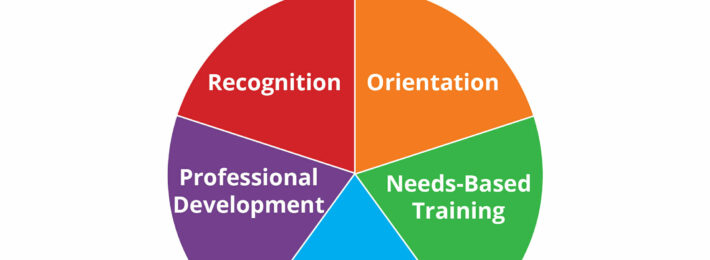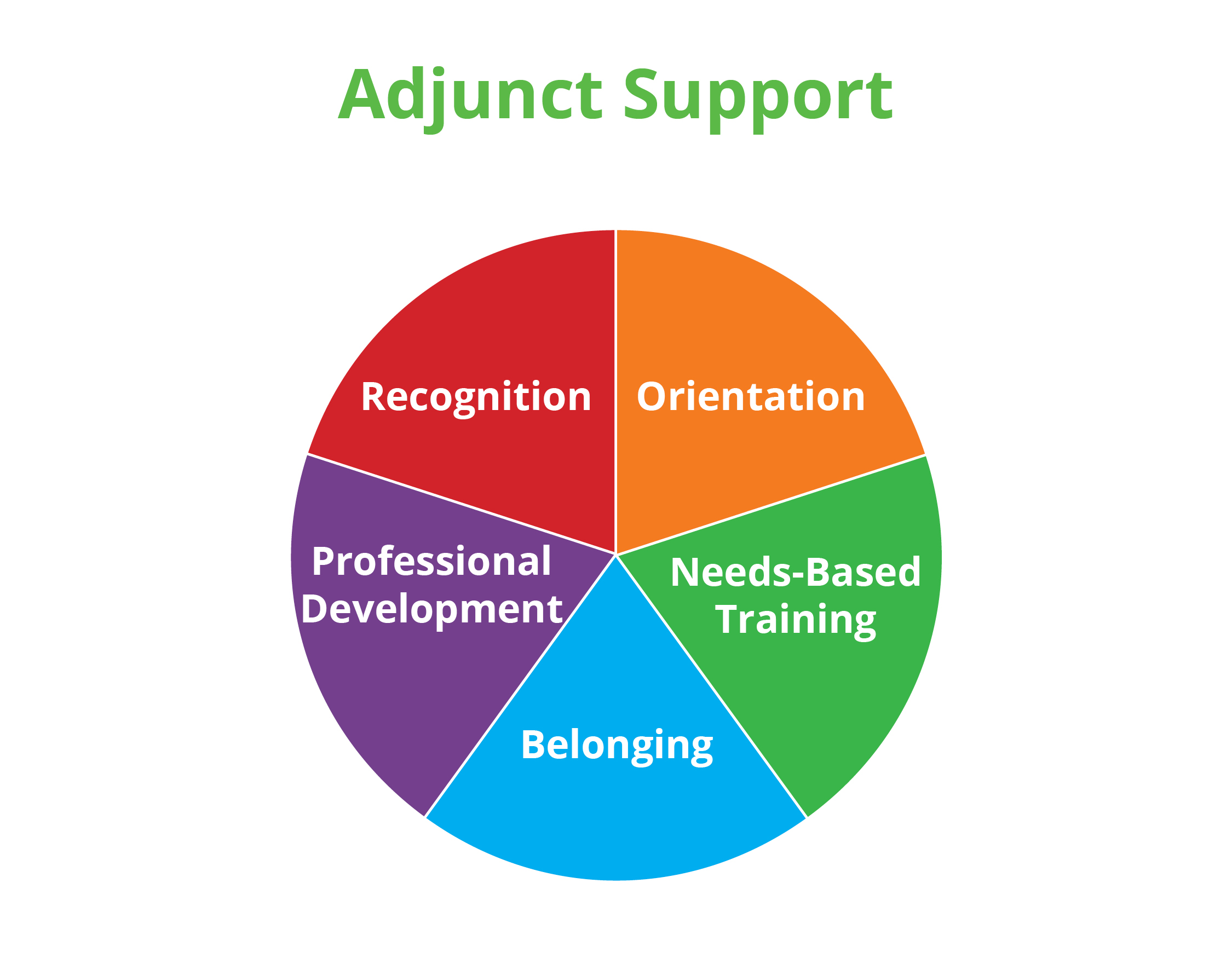
According to the Pullias Center for Higher Education, roughly half of higher education faculty are part-time employees. Increased reliance on contingent faculty has led many institutions to internally audit the level of support and the faculty development opportunities they offer to adjuncts. In a recent online training from Academic Impressions — “Supporting and Developing Adjunct Faculty” — Jennifer Strickland of Mesa Community College elaborated on the importance of effectively supporting this growing population of instructors.
During the training, Strickland also shared a list of the highest priority faculty development needs for adjunct faculty, those areas where intentional support can make a difference in engaging, developing, and retaining your adjunct faculty.
Strickland recommends:
- Providing a thorough and engaging orientation.
- Offering needs-based training.
- Taking purposeful steps to foster adjuncts’ sense of belonging.
- Ensuring that ongoing professional development is relevant and engaging.
- Thinking creatively about ways to offer meaningful recognition.
How does your institution match up in each of these 5 areas?

1. A Thorough and Engaging Orientation
This is the first point of contact with your adjunct faculty, and it is important to make it count. While finding ways to engage your audience is critical, it is imperative to also cover policy essentials. Aspects such as ADA policies, course syllabus requirements, and grading procedures must be included in this type of environment.
2. Needs-Based Training
However, just offering an annual orientation by itself will not be enough to really develop your adjunct faculty. Institutions should provide needs-based training on timely and applicable topics to boost engagement and achievement in the classroom. Strickland advises that departments should look at providing different types of training for faculty, based on relevant semester teaching needs.
3. A Sense of Belonging
“The more engaged adjunct faculty are in the community, the more committed they are to remaining an active member.”
Jennifer Strickland, Mesa Community College
Creating a sense of belonging and community will both help maintain strong relationships with adjunct faculty and improve the retention of your best adjunct instructors.
We’ve mentioned the importance of offering a formal orientation for adjunct instructors; Strickland emphasizes that this orientation can also serve as a key first step to building a stronger faculty community. Invite institutional leaders to the orientation and develop activities that foster peer-to-peer engagement.
4. Relevant and Engaging Professional Development
Faculty developers often struggle with engaging faculty in workshops or training. “Content is king,” Strickland advises, adding: “If the faculty show up for the workshop and it is boring, irrelevant, or misses expectations, you have communicated to them that their time is going to be better spent in other places.”
5. Meaningful Recognition
Recognition can make a huge impact on an adjunct instructor’s willingness to invest energy and time in faculty development, and on the decision to return to teach in following semesters. While it is not uncommon to recognize high-performing adjunct faculty with monetary rewards and incentives, this is not always possible with shrinking budgets. There are other ways to provide meaningful recognition.
In the recent training, Strickland brainstormed with participants from a variety of institutions and arrived at this list of ideas:
- Program perks (such as involvement in an iPad implementation initiative)
- College or district awards and certificates
- Chances to teach or utilize new classroom technology
- More opportunities for promotion to full-time positions
- Opportunities to attend conferences in their field
- Grant-funded bonuses
Learn More
We encourage you to check out Strickland’s 90-minute online training to review more techniques for engaging and supporting your contingent faculty.

